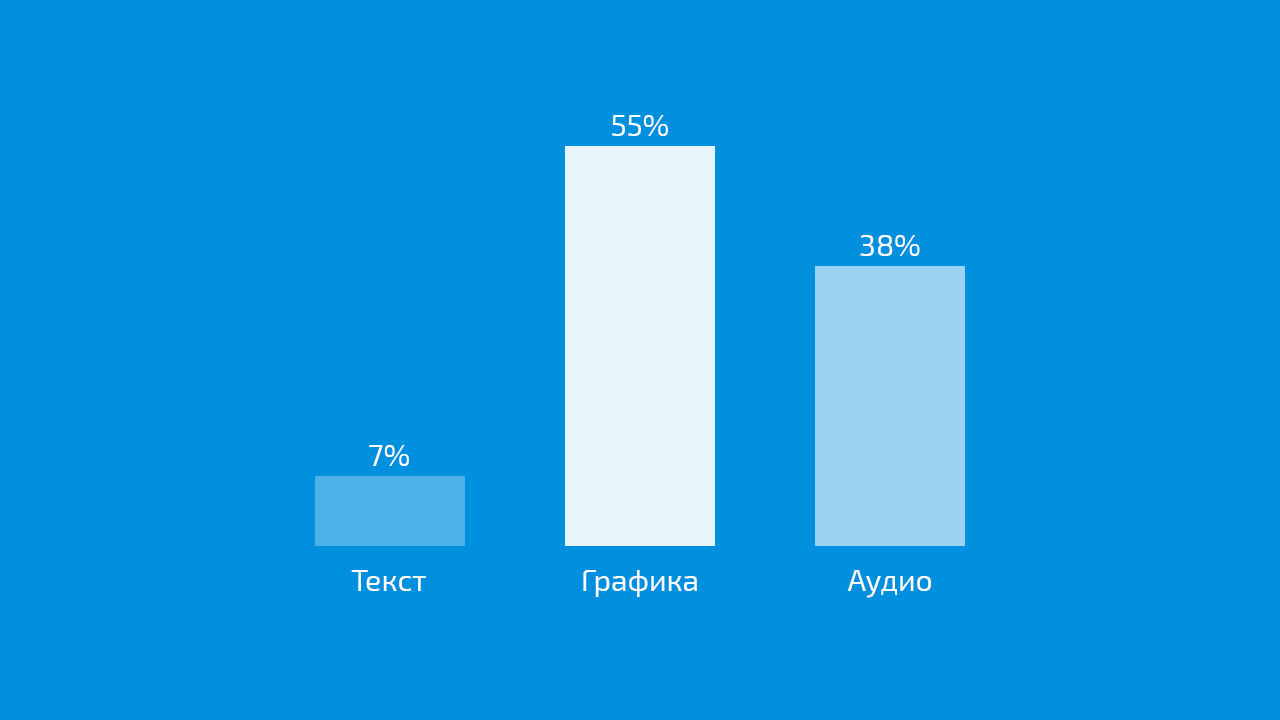Presentation skills: from amoeba to star
“ Good day! Probably, every speaker would like to say "Turn off your phones" and, of course, no one will. Everslide will help turn this in your favor so that you can say “Turn on your phones!”. ”
- An example of the introduction of the presentation Everslide .

Imagine, you are faced with the task of presenting a product or service to an audience. You have never spoken and are terribly afraid to disgrace. You can, if not avoid all the mistakes, then significantly reduce their number and make them a star of performances.
Any presentation consists of two parts:
Consider each part separately and derive the rules.
The content of the presentation is not only your speech, intonation, voice, but also your movements - your whole image.
The path to the star of the performances is comprehended only in practice, books can only be sent, but the road to the star performance lies through monotonous speeches, the spectators fall asleep, tricky questions, confusion, fear and much more.
- An example of the introduction of the presentation Everslide .

Imagine, you are faced with the task of presenting a product or service to an audience. You have never spoken and are terribly afraid to disgrace. You can, if not avoid all the mistakes, then significantly reduce their number and make them a star of performances.
Any presentation consists of two parts:
- Slides
- The content of the presentation
Consider each part separately and derive the rules.
Slides
- Rule 1 - Do not use bulleted lists
')
Marked lists in presentations - Moveton. Try to get rid of the lists, but if you cannot do without lists, use the tips from the article " How to focus the viewer's attention on the slides ", we have described how you can display the lists and make them easier for the viewer to perceive. - Rule 2 - Not more than seven words per slide
A large amount of text on the slide causes the viewer to read and, accordingly, does not hear you.
The viewer should look at you, not read the slide! - Rule 3 - Font size ~ 30pt
For quick and easy perception of the text, the font should be large and clear. - Rule 4 - Use Images
It has long been proven that images are perceived more easily and many times faster than text. Therefore, use high-quality images that reflect the essence of the slide.
The amount of perceived information from the slide, depending on the type of information. - Rule 5 - Images must occupy the entire slide or most of it.
Proceeding from the graphs above, give preference to large and clear images reflecting the essence of the slide. - Rule 6 - Break the ice
To reduce the resulting tension and make the audience relax a bit, tell an entertaining story or joke. Giving a humorous touch to the entry can help melt the ice between you and the audience. Just like the story, your joke should be relevant to the topic of the presentation.
The content of the presentation
The content of the presentation is not only your speech, intonation, voice, but also your movements - your whole image.
- Rule 7 - Confidence
During the speech, your speech should be confident and smooth, but not without emotional. You can speak with a few pauses, but try to get rid of parasitic words like "mm", "hmm ..." and others. Words-parasites in speech very spoil the impression from the speech and create the feeling that the speaker is "floating" in the subject.
To be more confident, train your performance, first to yourself, then in front of the mirror, then in front of the family. - Rule 8 - Body Language and Eye Contact
As mentioned in the article “ Six Tips for First-Class Presentation, ” if the audience is large, then “scan” the horizon. If the size of the audience allows, then meet with the eye of the audience - make eye contact.
Also, during the performance, watch your body language. Make movements open and natural. Small-scale movements reduce the credibility of the speaker, so that you will have to make additional efforts for successful performance. - Rule 9 - Be interesting
Your presentation should be interesting not only the topic, but also the way you tell. The monotonous speech "kills" the viewer, and if the performance is live and looks like a conversation with an audience, then the viewer's attention will be yours. - Rule 10 - Rehearse, rehearse, rehearse
To make your performance smooth and consistent, you need to learn it and rehearse until you can repeat it from beginning to end, and then a couple more times without a single hesitation or mistake.
Recognized professional speeches, Steve Jobs rehearsed his speech for hours at a time. He threw out too much and polished his speech, not only text and speech, but also movements, facial expressions, and pauses. When a performance becomes a part of you, it looks natural and is perceived by the audience positively and with high credibility.
Additionally
- Rule 11 - Know the topic
If you "float" in the subject of the speech, then you can get out of here with just one question. You do not have to know the answers to all questions, then 99% for sure. - Rule 12 - Know the Market
If you do not know the market, you will not be able to answer questions about your project in a projection on the market, which means that your presentation will tell you about the greenhouse project, which is divorced from the market. - Rule 13 - Include the basics
Your presentation should answer the fundamental questions: “What?”, “Who?”, “Why?” And “For whom?”. - Rule 14 - Key Points
Speaking for 2 hours without breaking into thematic blocks is very difficult for perception. It is necessary to break the speech into blocks, which will allow not to lose the viewer's attention and switch it from one question to another, within the framework of the presentation.
The path to the star of the performances is comprehended only in practice, books can only be sent, but the road to the star performance lies through monotonous speeches, the spectators fall asleep, tricky questions, confusion, fear and much more.
Source: https://habr.com/ru/post/296380/
All Articles